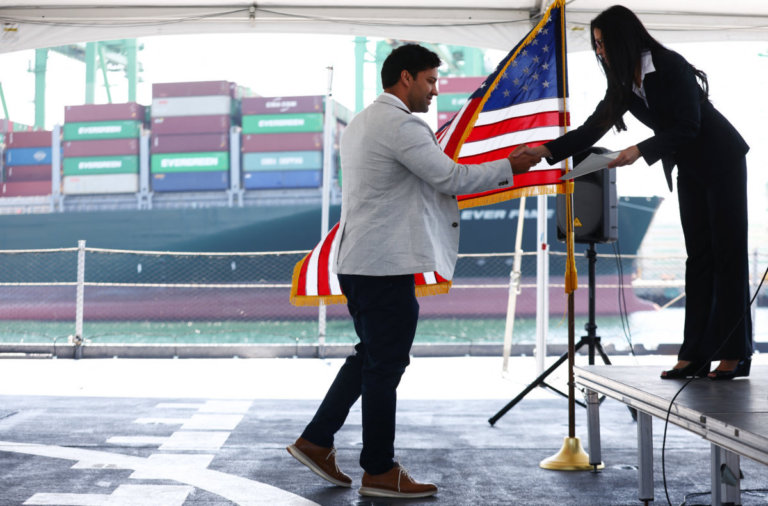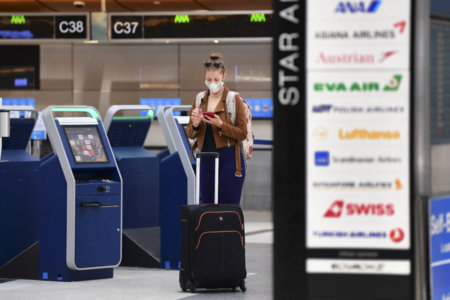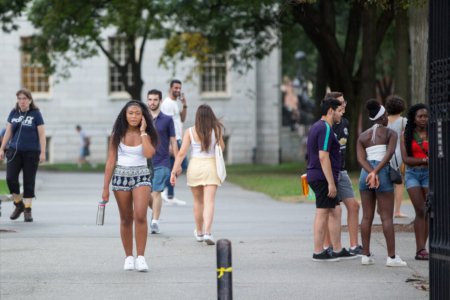
Many international students who study in the US hope to one day become lawful permanent residents — or green card holders — or US citizens. While the process may seem complicated due to how US immigration is structured, it is not impossible.
As the US student visa is considered a temporary, nonimmigrant visa, holders must not express intent to remain in the country after their studies. Since filing for a green card reveals a clashing “immigrant intent”, how does a student go about applying for citizen status? Here’s some expert advice from attorney Rajiv Khanna’s column in The Economic Times.
Last week, @DHSgov Deputy Secretary John K. Tien joined us for his first naturalization ceremony in his new role. He helped welcome 25 #NewUSCitizens during a special #IndependenceDay naturalization ceremony at our Atlanta field office. pic.twitter.com/rgNt6H81P7
— USCIS (@USCIS) July 6, 2021
Qualifying for a green card
As the inherent “nonimmigrant intent” of the US student visa goes against applying for a green card, the timing of your application is crucial. Khanna advises against having an active permanent resident application while holding a student visa; this provides grounds to deny your reentry into the country. So when should you set your plan in motion?
Khanna says it is safe for student visa holders to travel in and out of the US if their application has reached the final stage: Adjustment of Status (AOS). According to the US Citizenship and Immigration Services (USCIS), an AOS refers to the process you can use to apply for lawful permanent resident status — or Green Card — when you are present in the US.
Just be sure to obtain the Advance Parole document before travelling. “AOS can be filed only if the country a student is born in does not have a long waiting line of people who have applied for their green cards earlier in time,” he explains. Advance Parole allows you to travel back to the US without applying for a visa.
Switching visa type
Another process involves moving to a dual-intent visa such as the H1B, L-1, or O-1 visa. Unlike F-1 visa holders, the other two visa holders are allowed to have a green card pending. The H1B enables international graduates to work in the US, while the L-1 visa is for foreign nationals who have worked aboard at a foreign affiliate of the sponsoring US entity in an executive or managerial role.
F-1 visa holders who go on to work under the Optional Practical Training (OPT) or Curriculum Practical Training (CPT) programmes can transition to H1B visa with their employer’s endorsement. High-skilled immigrants holding this visa work specific professions in the US. A large percentage of them come from India to work in Silicon Valley.

New US citizen Selamawit Berhane, originally from Ethiopia, takes a selfie following a special World Refugee Day naturalization ceremony on June 17, 2021 in Los Angeles, California. Source: Mario Tama/Getty Images/AFP
Another option for highly qualified, recognised individuals is to petition for the Persons with Extraordinary Abilities Green Card or EB-1 visa. Bear in mind that this is a niche pathway for only the brightest foreign nationals, such as award-winning researchers and commercially successful artists.
Applying at the right time
To apply for a green card, you must first file Form I-140 with the USCIS. It can take several years to become a permanent resident in the US, which is why early planning can benefit international students. “Additionally, if and when an H1B is obtained, a pending green card petition provides the benefit of extension of the H1B status well beyond the normal six years,” Khanna writes.
Before you apply for a green card, reach out to your graduate network and speak to someone who has successfully done this. You may also engage with a visa agent or your designated school official to discuss employment and residency opportunities.










